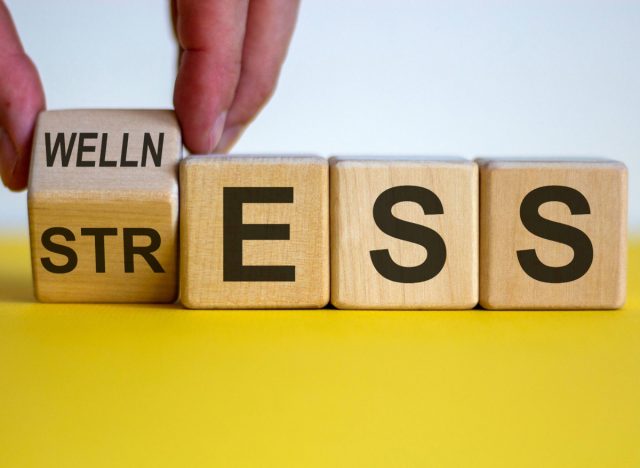By now, you’re likely well aware that stretching is an integral part of any exercise routine. But have you ever tried it when you’re feeling tense or anxious? We have the perfect solution on days when your mind and body call for some peace, calmness, and relief. It’s called somatic stretching, and it may very well be the new stress reliever you need in your life.
We spoke with Sarah Graff, master flexologist for StretchLab, who breaks down everything you should know about somatic stretching and its benefits. Continue reading to learn more, and when you’re finished, don’t miss A 63-Year-Old Yoga Instructor’s Top 3 Moves for Better Mobility.
What is somatic stretching?

The purpose of traditional stretching is to increase your range of motion and focus on the outside of your body. Somatic stretching, however, focuses on the inside. It establishes an inner connection to relieve trapped stress and tension. This form of stretching can uncover areas of your body that you don’t even know are tense.
“[Somatic stretching] serves as a means of re-establishing a connection with the body through deliberate movement,” Graff explains. “By gradually easing into stretches and turning attention inward, individuals can identify areas of tension or discomfort and work to release them. An effective technique within somatic stretching involves voluntary pandiculation, where muscles are intentionally contracted and released while they are in a gentle stretch. This process can be facilitated during assisted stretching sessions, with a stretch therapist providing guidance through tactile and verbal cues to target muscle contraction and release.”
How can somatic stretching help relieve stress and tension?

Stress usually “manifests physically,” Graff shares, and your body requires methods to alleviate it. Unlike animals who naturally brush off stress, humans are sometimes unaware they’re holding onto tension inside their bodies for long periods of time—most especially after experiencing trauma.
“Somatic stretching offers a pathway to reconnection with the body, enabling individuals to identify areas of lingering tension or trauma and subsequently release it,” Graff tells us. “With the support of a skilled and empathetic stretch therapist, somatic stretching can serve as a highly effective tool in alleviating tension and addressing trauma.”
People stand behind somatic stretching.
People are here for somatic stretching as an effective method to release stored stress, tension, and trauma. TikTok user The Workout Witch shared in a video, “Do you want to release some stored trauma from your body? Let’s go.” She then guided viewers through a hip-opening stretch, noting, “Your hips are a storehouse for unprocessed emotions and stored trauma within your body … hip-opening exercises cause a huge emotional release that clears the stored trauma out of your body.”
The Workout Witch shared another video of a somatic exercise to fall asleep fast “even if you have insomnia or sleep issues” for a full-body release. She wrote, “This exercise can cause deep states of relaxation. Tense your quads as much as you can for four seconds. Release the tension and take two breaths. Repeat step one and two moving up through the thighs, glutes, stomach, back, chest, shoulders, and face.”











